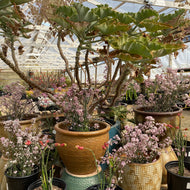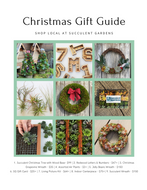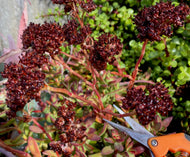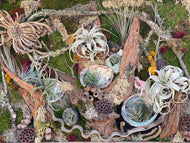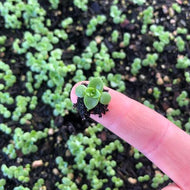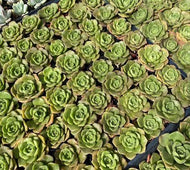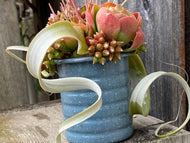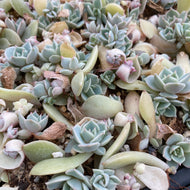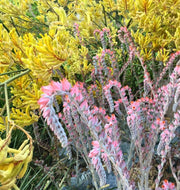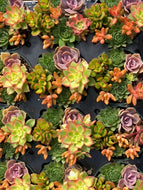Maybe it’s because I’ve just come back from visiting family in Chicago, where winter is a long, bleak stretch of grayness, but when I was walking around the nursery today, I was struck by how many of our succulents are putting up dazzlingly colorful blooms now, in late January.
Along with some vivid Aloe blooms like those I posted about recently, several Kalanchoes have put on their stunning late-winter colors recently.

Kalanchoe tubiflora. ‘Chandelier Plant’ is a common name that’s been applied to several varieties of kalanchoes and others, but this week in our House 1, the most glittering chandelier is hanging three feet above a 1-gallon Kalanchoe tubiflora.
The plant’s foliage is a modest clump of long, thin tubes, noticeable mostly for its mottled color. But it’s holding up a stalk that is topped by three rings of vivid orange trumpet flowers. It’s a real eye-catcher.
Warning: Kalanchoe tubiflora is also reported to be toxic to pets and wildlife who nibble on its foliage.

Kalanchoe pumila, or Flower Dust Plant, like its cousin above, is toxic but so beautiful in bloom. Its dusty-looking leaves add a touch of gray to the garden year-round. Then the pale purple flowers pop up, and it’s a plant you can’t miss.
Hardy to about 25 degrees, this is a great rock garden plant that spreads to fill in nooks and crannies. It also fills a focal-point container nicely, as it’s doing for us in the retail area.

Kalanchoe fedtschenkoi is also known as Lavender Scallops, which describes its toothy leaves (although their lavender fades to green if the plant gets a lot of shade). When the abundance of coral and pink blooms arrive, though, you'll forget all about the leaves.
It's an easy-to-grow plant whose stems, if they sprawl along the ground, often re-root.

Here's one of this week's bright spots that isn't a Kalanchoe. While they aren’t blooms but the fruits that come after flowering, the bright yellow, misshapen objects on Cylindropuntia imbricata (above), or Cane Cholla, are attention-grabbers like the others in this post.
Each of these bumpy fruits has a large scar at one end showing where a flower—a beauty itself, in magenta—used to be. Their taxicab-yellow coloring may catch your eye, but for bighorn sheep, pronghorn antelope and other wildlife, it’s a sign of something good to eat.

